Before even hopping on a motorcycle, it’s a smart decision to ride about the mechanics of the machine and familiarize yourself with key concepts. Having an idea in your head is going to come in handy when you’re faced with common beginner problems or later on when you’re on the road.
That’s how you really get a handle on the motorcycle. Let’s get started.
Motorcycle Basic Controls
Most motorcycles have the same controls; but you should always check the owner’s manual since the locations and shapes of some features will vary between makes and models.

Motorcycle basic parts:
Handlebars
Right side:
- Electric start button – usually yellow or white.
- Engine cut-off switch – above the electric start button. Usually red.
- Above the right throttle is the front brake lever.
Left side:
- Horn
- Indicators (blinkers)
- Choke
- Headlight dip switch (high beams/low)
- Clutch lever.
Between the handlebars, you find the ignition key. Ahead of the handlebars, you will also see the speedometer, odometer, and the tachometer.
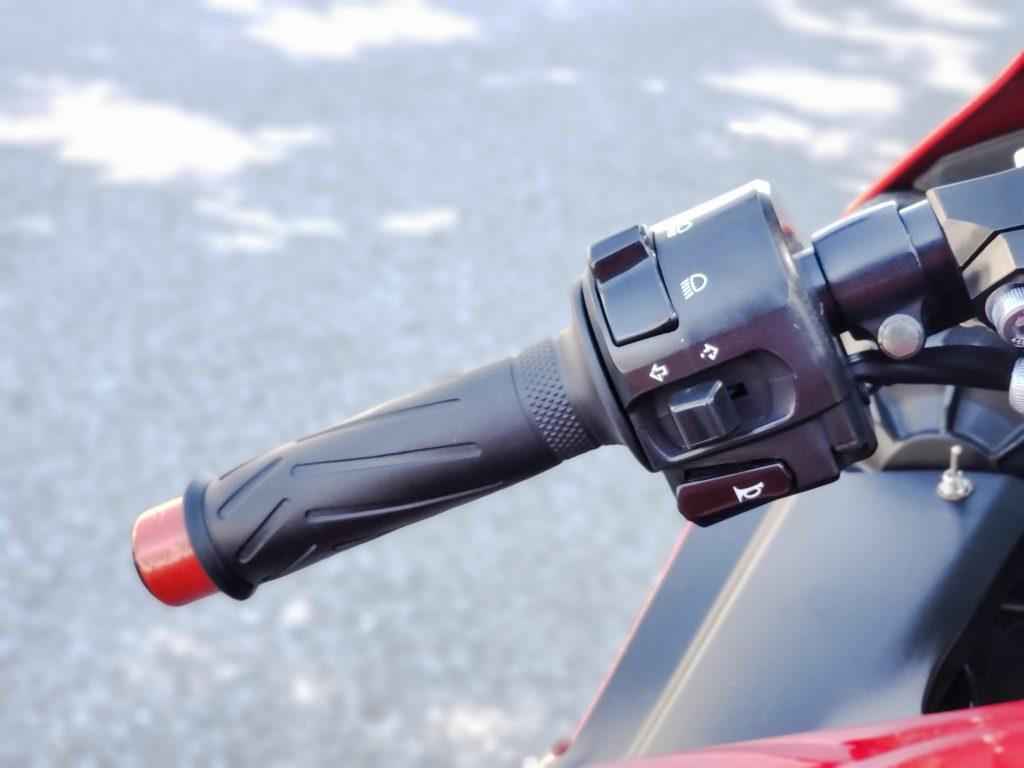
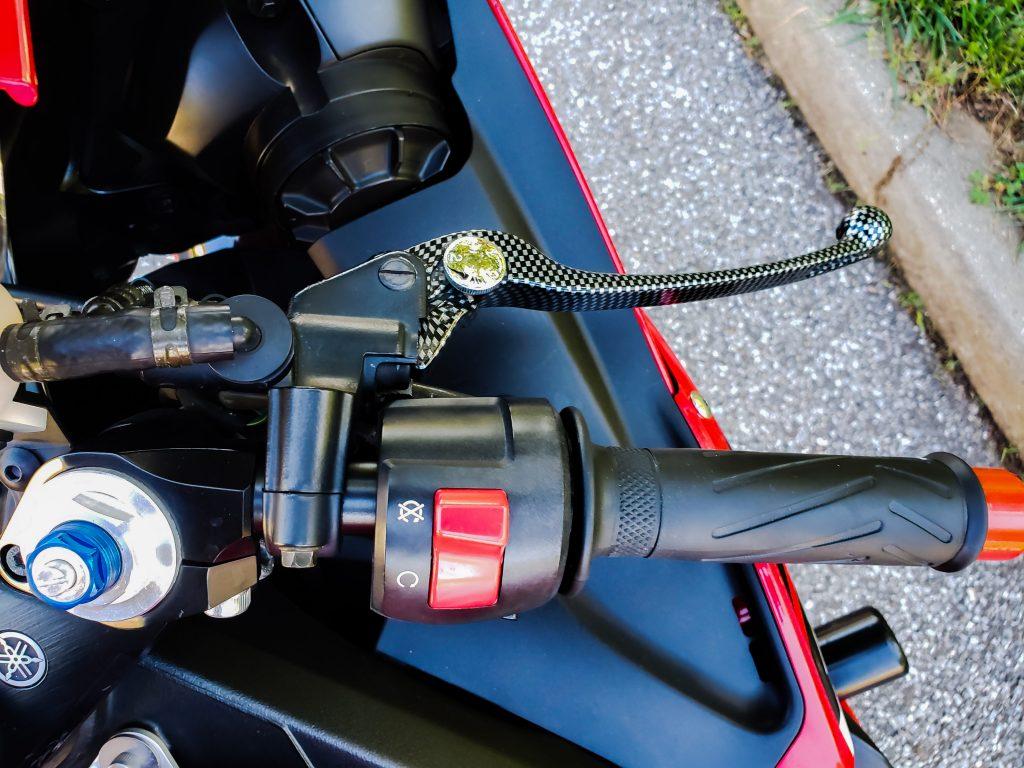
Older Styles and Off-Road Bikes
Here’s some special considerations if you are on an older model or have an off-road bike:
Fuel petcock – these are usually attached to the left near the carburetor. You can lean down to switch the gas tank when the fuel is getting low and you need to get to the gas station ASAP.
Kick starter – off-road bikes have kick starters more commonly than street bikes. The kick starter works when you push down on the lever, turning the engine crank and causing the pistons to put pressure against the spark plug. Fuel ignites to start the engine.
What To Check Before Your Ride Every Time
Professional schools throughout the country use the acronym T-CLOCs to help you remember what you should check before heading on your bike. These checks should be done at least once a year, depending on how often you are riding your bike. If you ride every single day, you will have to use T-CLOCs much more often.
- T – Tires
- C – (Main) Controls
- L – Lights & other controls
- O – Oil & other fluids
- C – Chassis
- S – Stands
Tires
Check the air pressure and look at the condition of the tires. Are they worn down? Cracking? What is the condition of the spokes? Do you note any air leakage?
Next, look at the rims, bearings, seals, and casts. Does each brake work as it should? Does the bike fight you when turning or slowing down?
Controls
The main controls include the handlebars, cables, hoses, levels, pedals, and throttle. Make sure the condition of the hoses is good and that everything is properly lubricated. The bars should be straight, and the throttle should move without resistance. Ensure the hoses aren’t cut or leaking. Any bulges, chafing, cracks or fraying of control cables needs to be repaired.
Lights & Other Controls
This includes the battery, wiring, tail and signal lights, switches, blinkers, headlight, and reflectors. Is everything illuminating? Do the blinkers flash right? Is fraying or kinks in the wiring? Are the beams strong enough in the dark?
Oil & Other Fluids
Check the gaskets and seals for any leaks. Ensure the oil level is good, along with other fluid levels. Check for sediment in the coolant reservoir.
Chassis
The chassis is made up of the frame, suspension, chains, belts, and fasteners. Nothing should rattle. Nothing should be frayed, cracking, peeling, or chipping. Ensure that everything is tight and that there is tension in the belts and chains.
Stands
Check for cracks or bends in the stands. Springs should hold their position without looseness.

Basic Mechanics of a Motorcycle
Being that a motorcycle rides on two wheels, it is designed to lean to either side. Through balance and input from the ride, the motorcycle maintains an upright position. Many beginners are afraid that the bike is going to fall over if they lean too far, but that’s not the case. Through the forces of physics, such as friction, momentum, and gravity, it’s nearly impossible for a bike that’s going to straight to fall over.
Engine
Another reason the motorcycle stays upright is the force of the pistons in the engine. These pistons move up and down, creating a force that helps the moving bike maintain it’s upward position.
Tires
The tires of motorcycles are designed to be rounded, ensuring that as the bike rounds a corner, the same surface area of the tire remains on the ground.
Chassis
For the beginner, all you need to know about the chassis is how to sit properly. When positioned properly on the bike, your wrists, knees, and back will be comfortable. You should also be able to engage your core and thigh muscles when using your body to maneuver.
Clutch
Most bikes are manual transmission. The clutch keeps the bike moving but also controls the speed by using friction. Clutches are usually bathed in the same oiled the engine uses, so if you ride the clutch for a while, you won’t cause damage. However, some bikes are different, so refer to the owner’s manual.
Wrapping It Up
For the new rider, your focus should be memorizing where the controls are and what certain parts of the bike do. By learning the general location, you can drive much more safely (and not while staring at the handlebars).
Remember, the everything takes practice. In the same way you learned to ride a bicycle, you need some patience with riding a motorcycle. With that, you’re ready to begin!
Liked this article? Want more beginner’s tips? Subscribe to my YouTube channel to get notifications about the latest videos and never miss out.
You Might also like
-
The Art of Cornering on a Sportbike
Cornering is an essential skill for sportbike riders, and it requires a combination of physical and mental techniques to be executed effectively. From maintaining control in a lean to anticipating turns and navigating curves, cornering is an art that requires practice, patience, and confidence. In this comprehensive guide, we’ll explore the fundamentals of cornering on a sportbike and provide tips and tricks to help you become a more confident and skilled rider.
Download RunThaCity’s Cornering on a Sportbike CheetSheet
Understanding the Physics of Cornering
The key to effective cornering on a sportbike is understanding the physics behind the maneuver. When you enter a turn, the centrifugal force of the turn pushes the bike away from the center of the turn, and the suspension compresses, causing the bike to lean in the direction of the turn. Maintaining control in a lean requires balancing the force of gravity, which tries to pull the bike down, with the centrifugal force, which tries to push the bike out.
By understanding the physics of cornering, you can gain a better appreciation for the forces acting on your bike and the techniques required to counterbalance these forces. For example, you can use your body weight to shift in the direction of the turn, which helps to balance the forces acting on the bike and maintain stability and control in a lean.
The physics of cornering on a sportbike involves a complex interplay between the forces of gravity, friction, and centripetal force. When a rider enters a turn, gravity pulls the bike towards the center of the turn, creating a natural tendency to lean into the turn. To counteract this gravitational pull and maintain balance, the rider must apply a countervailing force known as centripetal force. This force is generated by leaning the bike into the turn and applying a slight amount of pressure to the inside handlebar.
The amount of lean required to maintain balance in a turn is largely dependent on the speed of the bike and the radius of the turn. The faster the bike is moving, the more lean is required to maintain control. Conversely, the tighter the turn, the more lean is required. To achieve the optimal balance between speed and lean, riders must coordinate their inputs to the handlebars, throttle, and brakes.
Friction also plays an important role in the physics of cornering. The tires on a sportbike are designed to provide a high level of grip and traction, allowing the rider to carve through turns with confidence. However, this grip can be easily compromised by factors such as road surface, tire wear, and weather conditions. To maximize traction and grip, it is important to maintain the correct tire pressure and keep the tires in good condition, as well as adapting your riding style to the conditions of the road.
By understanding the physics of cornering, riders can develop a deeper appreciation for the dynamics of their sportbike and the techniques required to maintain control and stability in turns. With this knowledge, riders can make more informed decisions about their riding technique and make the necessary adjustments to their speed, trajectory, and body position to ensure a safe and enjoyable riding experience.
Body Position and Control
Effective cornering on a sportbike requires proper body position and control. To maintain balance and control in a lean, you need to keep your weight centered over the bike and use your body to counterbalance the forces acting on the bike. Your inside hand should grip the handlebars firmly, while your outside hand should be relaxed and ready to make adjustments. Your inside knee should be tucked into the tank, and your outside foot should be positioned on the peg for stability.
Maintaining proper body position and control is essential for effective cornering, as it allows you to respond quickly and effectively to changes in the road and the forces acting on the bike. By keeping your weight centered over the bike, you can maintain balance and control, and by using your body to counterbalance the forces acting on the bike, you can prevent the bike from tipping over in a turn.
Body position and control are critical components of effective cornering on a sportbike. Proper body position allows the rider to maintain balance and control over the bike, while also improving visibility and stability. The key elements of proper body position include:
- Lean Angle: The rider’s lean angle should be adjusted to match the speed and radius of the turn. As the speed increases or the turn tightens, the lean angle should increase accordingly. Riders should aim to maintain a smooth and gradual lean, avoiding sudden or excessive movements that can upset the balance of the bike.
- Weight Distribution: The rider’s weight should be shifted towards the inside of the turn, helping to counteract the gravitational pull towards the center of the turn. This can be achieved by shifting the rider’s body weight to the inside footpeg, while maintaining a firm grip on the handlebars.
- Upper Body: The rider’s upper body should be kept as relaxed and upright as possible, avoiding any unnecessary movements that can affect the balance of the bike. The rider should maintain a firm grip on the handlebars, using a light touch to control the bike’s movements.
- Lower Body: The rider’s lower body should be kept as still and relaxed as possible, avoiding any unnecessary movements that can affect the stability of the bike. The rider should maintain a firm grip on the footpegs, using their knees to grip the tank and maintain control over the bike.
By maintaining proper body position and control, riders can ensure a smoother and more stable ride, improving their ability to negotiate turns and respond to changing road conditions. However, it is important to note that body position and control should be adapted to the conditions of the road and the rider’s personal comfort and preference. With practice and experience, riders can develop a more refined and personalised approach to body position and control, improving their cornering skills and overall riding experience.
Braking and Acceleration Techniques
The timing and technique of braking and acceleration play a critical role in effective cornering on a sportbike. As you approach a turn, you should reduce your speed by applying the brakes smoothly and progressively. After entering the turn, you should ease off the brakes and maintain a constant speed, using the throttle as needed to maintain balance and control. As you exit the turn, you should smoothly apply the throttle to accelerate out of the turn and onto the straightaway.
Effective braking and acceleration techniques are essential for maintaining control and stability in a turn. By reducing your speed before entering a turn, you can reduce the forces acting on the bike and maintain control in a lean. By easing off the brakes after entering the turn, you can maintain a constant speed and use the throttle as needed to maintain balance and control. And by accelerating smoothly out of the turn, you can build up speed and exit the turn with confidence.
Braking and acceleration techniques are crucial components of effective cornering on a sportbike. These techniques allow the rider to control the speed and trajectory of the bike, improving stability and confidence in turns. The key principles of braking and acceleration techniques include:
- Braking: Braking should be performed as smoothly and progressively as possible, avoiding any sudden or jerky movements. The rider should aim to maintain a consistent speed throughout the turn, avoiding any sudden changes in speed that can affect stability. When braking, the rider should apply the front brake first, followed by the rear brake, adjusting the amount of pressure applied to each brake to suit the conditions of the road and the speed of the bike.
- Acceleration: Acceleration should be performed smoothly and progressively, avoiding any sudden or excessive changes in speed. The rider should aim to maintain a consistent speed throughout the turn, avoiding any sudden changes in speed that can affect stability. When accelerating, the rider should use the throttle to control the speed of the bike, adjusting the amount of throttle applied to suit the conditions of the road and the speed of the bike.
By combining proper braking and acceleration techniques with proper body position and control, riders can achieve a smoother and more stable ride, improving their ability to negotiate turns and respond to changing road conditions. However, it is important to note that braking and acceleration techniques should be adapted to the conditions of the road and the rider’s personal comfort and preference. With practice and experience, riders can develop a more refined and personalized approach to braking and acceleration, improving their cornering skills and overall riding experience.
Look Ahead and Anticipate Turns
Effective cornering on a sportbike requires you to look ahead and anticipate turns well in advance. By keeping your gaze fixed on the road ahead, you can spot obstacles and make necessary adjustments to your speed and trajectory. You should also scan the road for hazards, such as gravel, potholes, or wet spots, and avoid them whenever possible.
Looking ahead and anticipating turns is a critical component of effective cornering on a sportbike. By looking ahead and anticipating turns, riders can improve their visibility, reaction time, and stability, allowing them to negotiate turns with greater confidence and control. The key principles of look ahead and anticipating turns include:
- Look Ahead: Riders should keep their gaze focused on the road ahead, looking several seconds ahead of the bike to anticipate turns and other road hazards. This allows the rider to react in a timely manner, avoiding any sudden or unexpected movements that can affect stability.
- Anticipate Turns: Riders should anticipate turns by scanning the road ahead for any changes in direction or road conditions. This allows the rider to prepare for the turn in advance, adjusting their speed, body position, and control accordingly.
- Plan Your Line: Riders should plan their line through the turn, anticipating the path of the bike and the trajectory of the turn. This allows the rider to negotiate the turn with greater control and stability, improving their ability to maintain a consistent speed and line.
By combining proper look ahead and anticipating turns with proper body position and control, riders can achieve a smoother and more stable ride, improving their ability to negotiate turns and respond to changing road conditions. However, it is important to note that look ahead and anticipating turns should be adapted to the conditions of the road and the rider’s personal comfort and preference. With practice and experience, riders can develop a more refined and personalised approach to look ahead and anticipating turns, improving their cornering skills and overall riding experience.
Practice and Refine Your Techniques
Effective cornering on a sportbike requires practice, patience, and confidence. While it may take some time to develop the skills and techniques required to corner with confidence, with practice and refinement, you can become a more skilled and confident rider. To improve your cornering skills, consider practicing on a safe and controlled environment, such as a track day or a closed course. You can also seek feedback from more experienced riders and instructors to help refine your techniques and identify areas for improvement.
Conclusion
Cornering is an essential skill for sportbike riders, and it requires a combination of physical and mental techniques to be executed effectively. From understanding the physics of cornering to maintaining proper body position and control, braking and acceleration techniques, and looking ahead and anticipating turns, there are many factors that contribute to effective cornering on a sportbike. With practice, patience, and confidence, you can develop the skills and techniques required to corner with confidence and enjoy a safer and more enjoyable riding experience.
-
Safety First: Essential Gear for Sportbike Riding
Sportbike riding is a thrilling and exhilarating experience, but it can also be dangerous if proper safety precautions are not taken. One of the most important steps you can take to protect yourself while riding is to wear the right gear. Whether you’re a seasoned rider or just starting out, it’s essential to have the right equipment to keep you safe on the road.
Riding a sportbike is a thrilling experience, but it is also important to prioritize safety. Wearing the right gear can help protect you in the event of a crash and keep you comfortable on long rides. In this article, we will explore the essential items that every sportbike rider should have.
Download RunThaCity’s Cheatsheet for Essential Gear for Sportbike Riding
Protect Your Most Valuable Asset with a DOT or Snell Certified Helmet
When it comes to riding a sportbike, the helmet is the most crucial piece of gear you can wear. It protects the most valuable part of your body, your head and neck. It is essential to choose a helmet that is DOT or Snell certified, as these have undergone rigorous testing to meet strict safety standards. A good helmet should fit snugly and comfortably, without being too tight or too loose. Make sure to try on several different brands and models to find the best fit for your head shape.
A good helmet should also have adequate ventilation to keep your head cool and dry, as well as an interior lining that is comfortable and moisture-wicking. Some helmets come with removable and washable liners, which can be a great feature for keeping your helmet fresh and clean. The helmet should also have a secure chin strap that keeps the helmet in place in the event of a crash.
When choosing a helmet, consider your riding style, as well as the weather conditions you will be riding in. If you do a lot of highway riding, a full-face helmet is a good choice, as it provides the most protection for your face and chin. If you do a lot of off-road riding, an open-face or modular helmet may be a better option, as it provides better ventilation and a wider field of view.
In conclusion, the helmet is the most important piece of gear you can wear while riding a sportbike. It is essential to choose a DOT or Snell certified helmet that fits well and provides adequate protection for your head and neck. Invest in a high-quality helmet, as it could save your life in the event of a crash.
Protect Your Body with the Right Motorcycle Jacket
A motorcycle jacket is a crucial piece of gear for sportbike riding. It serves not only as a barrier against wind and rain, but also as a layer of protection in the event of a crash. When choosing a motorcycle jacket, look for one made of abrasion-resistant material, such as leather or kevlar. This type of material will provide better protection in the event of a slide or impact.
Some motorcycle jackets come equipped with armor in the elbows, shoulders, and back. This extra layer of protection can help reduce the risk of injury in a crash. When shopping for a motorcycle jacket, look for one with CE-certified armor, as this type of armor has been tested to meet strict safety standards.
In addition to protection, a motorcycle jacket should also be comfortable to wear. Look for a jacket with adjustable straps and zippers, as well as a lining that will keep you warm on cooler days and cool on hot days. When trying on a jacket, make sure it fits well and allows for a full range of motion.
By investing in a high-quality motorcycle jacket, riders can feel confident and protected while riding their sportbike.
Protect Your Hands with Abrasion-Resistant Gloves
When it comes to riding a sportbike, gloves are more than just a comfort item – they are essential for safety. In addition to protecting your hands from wind, rain, and other elements, gloves can help protect your hands in the event of a crash. Abrasion-resistant materials, such as leather or heavy-duty fabrics, provide the best protection against road rash and other injuries.
When choosing gloves, it’s important to look for gloves with reinforced palms. This extra layer of protection helps to prevent injuries to your hands, as well as reducing the risk of cuts and bruises in the event of a crash. Make sure the gloves fit snugly, but are not too tight, as you want to ensure they do not restrict your ability to grip the handlebars or shift gears.
Ultimately, investing in a good pair of motorcycle gloves can make a big difference in terms of your safety and comfort on the road. So, make sure to choose gloves that meet your specific needs, whether you are looking for additional protection, extra comfort, or improved grip.
Keep Your Feet Safe with Motorcycle Boots
Riding a sportbike can be dangerous, especially if you don’t have the proper gear to protect yourself. Your feet and ankles are especially vulnerable in the event of a crash, making motorcycle boots an essential piece of gear for any rider.
When choosing motorcycle boots, look for a pair that is made of abrasion-resistant material. This will help protect your feet from road rash in the event of a crash. Additionally, look for boots that have reinforced toes and heels. These extra layers of protection can help reduce the risk of injury in the event of an impact.
Another important factor to consider when choosing motorcycle boots is fit. Make sure the boots fit snugly and don’t move around on your feet while you ride. This will help you maintain proper control of your bike, especially in the event of a sudden maneuver.
In addition to providing protection, motorcycle boots can also offer added comfort and support. Look for boots with a comfortable and supportive insole, and choose a pair that is water-resistant if you plan on riding in inclement weather.
Motorcycle boots are a crucial piece of gear for any sportbike rider. By investing in a high-quality pair of abrasion-resistant boots with reinforced toes and heels, you can help protect your feet and ankles while enjoying your ride.
Protect Your Lower Half with Motorcycle Pants
When it comes to motorcycle gear, many riders focus on the upper half of their body, but it’s just as important to protect the lower half as well. Motorcycle pants are an essential piece of gear that should be made of abrasion-resistant material to protect your legs in the event of a crash. The material should be strong enough to resist tearing and provide a barrier against the road in the event of an accident.
When choosing motorcycle pants, look for pants with reinforced knees and hips. These areas are vulnerable in the event of a crash, so extra protection is essential. Many pants also feature adjustable straps and zippers to provide a secure and comfortable fit.
In addition to safety, motorcycle pants should also be comfortable to wear for extended periods of time. Look for pants that are made of breathable material and provide a good range of motion for riding. Consider the climate in your area when choosing pants and look for options that are designed to keep you cool in hot weather or warm in cold weather.
Motorcycle pants are an essential piece of gear that should not be overlooked. Protect your legs and ensure your comfort by investing in a good pair of motorcycle pants.
Eye Protection
Eye protection is an essential aspect of sportbike riding that should not be overlooked. When riding at high speeds, debris from the road can easily fly up and cause injury to your eyes. This is why investing in a good pair of motorcycle glasses or a full-face helmet with a visor is important. The glasses or visor should have the capability to shield your eyes from wind, rain, and other elements that can cause discomfort and distraction while riding. Additionally, it is important to choose glasses or a visor that provides a clear and unobstructed view while riding.
In the event of a crash, a full-face helmet with a visor provides added protection for your face and eyes. The visor will protect your face from impacts, as well as prevent debris from entering your helmet. On the other hand, motorcycle glasses can be removed and replaced quickly and easily, making them a convenient option for riders who frequently switch between open-face and full-face helmets.
Eye protection is an essential component of sportbike riding gear. It helps keep you safe from the elements, debris from the road, and other potential hazards while riding. Invest in a good pair of motorcycle glasses or a full-face helmet with a visor, and ensure that you have the proper eye protection to enjoy a safe and comfortable ride.
Conclusion
In conclusion, having the right gear while riding a sportbike is not only crucial for your safety but also enhances your overall riding experience. Wearing the right gear protects you from the elements, including wind, rain, and road debris, and also helps prevent injury in case of a crash. A DOT or Snell-certified helmet, abrasion-resistant jacket, gloves, boots, pants, and proper eye protection are all important pieces of gear that every sportbike rider should have. Don’t compromise on safety and invest in high-quality gear that will give you peace of mind and allow you to fully enjoy your ride. Remember, when it comes to riding a sportbike, safety should always come first.
-
Viking Cycle Bloodaxe Leather Motorcycle Jacket Review
When it comes to motorcycle jackets, you want something that balances the need to look like you own the road and enough protection to keep you from becoming part of the road. Viking Cycle, a brand based out of California, has been turning heads with their attention to detail and security in their full range of motorcycle clothing for men and women. The best part is the price tag.
“As an Amazon Associate I earn from qualifying purchases.”Overview of the Bloodaxe Motorcycle Jacket
Out of the box, the Bloodaxe looks awesome and feels awesome. When the jacket first goes on, you’ll notice it’s a bit stiff—but it does loosen up with some wear, as good leather should. The zippers have solid construction, open and close smoothly, and lay well when you’re riding.
The biggest advantage of the Viking Cycle Bloodaxe isn’t the awesome name but the amount of storage. You won’t believe the amount of storage space you have with this jacket. There’s so much, it’s almost ridiculous.
There is a headphone wire system that you can feed into the collar of the jacket, earphone pockets, a media player pocket, cellphone pocket with 3 second access, 2 knife and pen pockets, an eyeglass pocket, a pocket designed to find a 10-inch tablet, extendable keyholder, and another pocket that can fit travel documents and your wallet. The pockets have a unique “no bulge” design, so even if you somehow managed to stuff every single compartment this jacket has, it will still look flat and sleek and not like a bubble jacket. Overall, it sits nice on the body and doesn’t feel stifling.
The sizing does run a little small. Someone around 5 foot, 10 inches, 180 pounds will fall into the M-L range, depending on how much you want to bundle up. If you take out the thermal lining or don’t want to wear a lot of clothing underneath, you might want to size down to prevent the jacket from floating on you.
“As an Amazon Associate I earn from qualifying purchases.”No products found.
No products found.
Specifications
(listed adapted from vikingcycle.com)
- Construction – Drum-dyed soft genuine cowhide leather (milled buffalo), padded shoulders, and Viking cycle level 1 removable “armor” on elbows and spine; two intake vents on the top of the shoulders and exhaust vents in the back
- External Storage – 2 zippered chest pockets, 2 zippered side pockets, and a single sleeve pocket
- Internal Storage – 2 secured zippered pockets and a secret compartment
- Adjustability – waist snaps and sleeve zippers
- Visibility – High viz stripes located on the back and shoulders
Pros
- Sag and wrinkle resistant
- Wind and water resistant
- Abrasion resistant
- A ton of hidden pockets on the internal side of the jacket
- CE marked armor in the back and shoulders – comfortable and stays in place while riding around
- Budget-friendly cost without a lack of quality and safety
- Stylish design
Cons
- Can be hot – the jacket has a thermal lining and is heavy, so it can be oppressive in the summertime even with the vents open. For that reason, it might not be ideal for moving in slower paced traffic;
- CE armor level could be higher.
Warranty Info
Viking Cycle offers a 1 year manufacturer’s warranty on all of their products. This means that any defects or imperfections that you find are covered. The warranty does not cover wear and tear or damages caused from improper care.
This might raise some questions about durability, since some production errors or faults can take a few days or weeks to appear.
If you start to notice something odd going on with the jacket that you didn’t cause, you can contact Viking Cycle at info@vikingcycle.com with the order number and a photo of the defect to get an exchange or refund.
No products found.
Conclusion
Honestly, for the quality of the jacket, you would expect to pay more for it than you do. The name might be a bit for metal than what this motorcycle jacket offers, but the sleekness of the design, paired with the sound construction and unheard of amount of storage makes it a clear winner. If you’re looking for a balance of style and safety without breaking your bank, I recommend the Viking Bloodaxe motorcycle jacket for your wardrobe.
Looking for more details about choosing motorcycle jackets and other riding gear? Then check out and subscribe to my YouTube channel today!
No products found.
No products found.
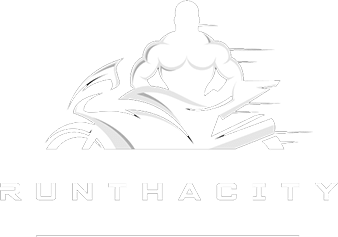

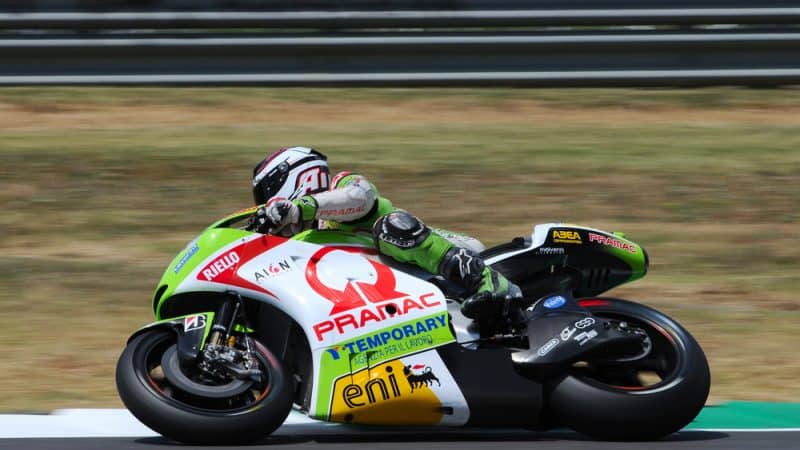


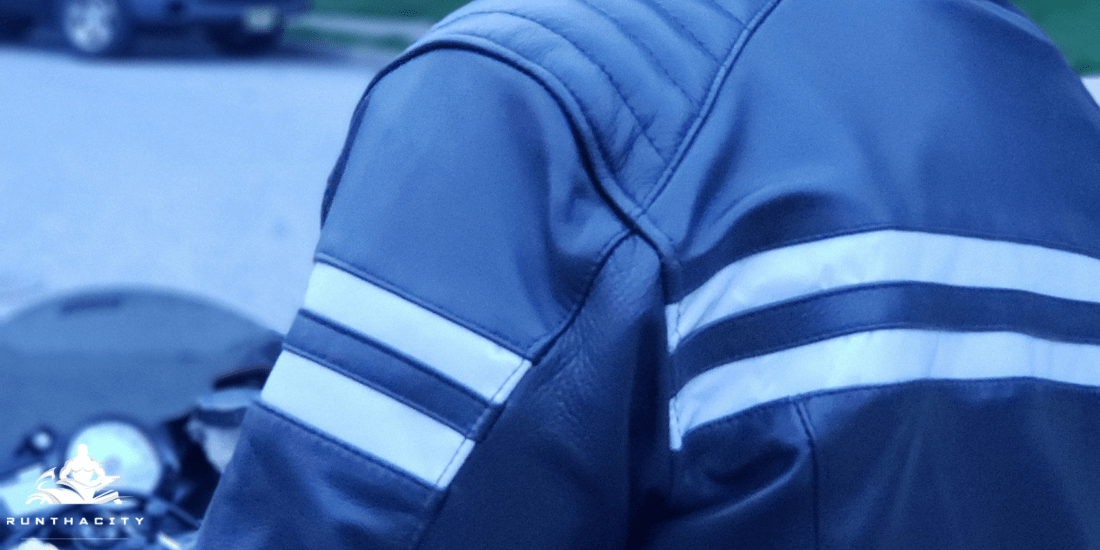

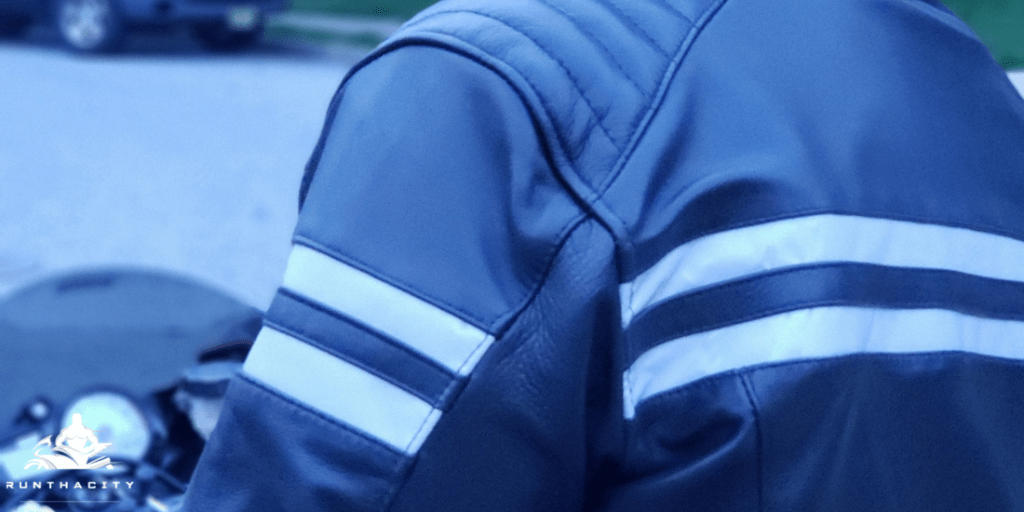





2 comments on Motorcycle Basics: Before You Start Riding